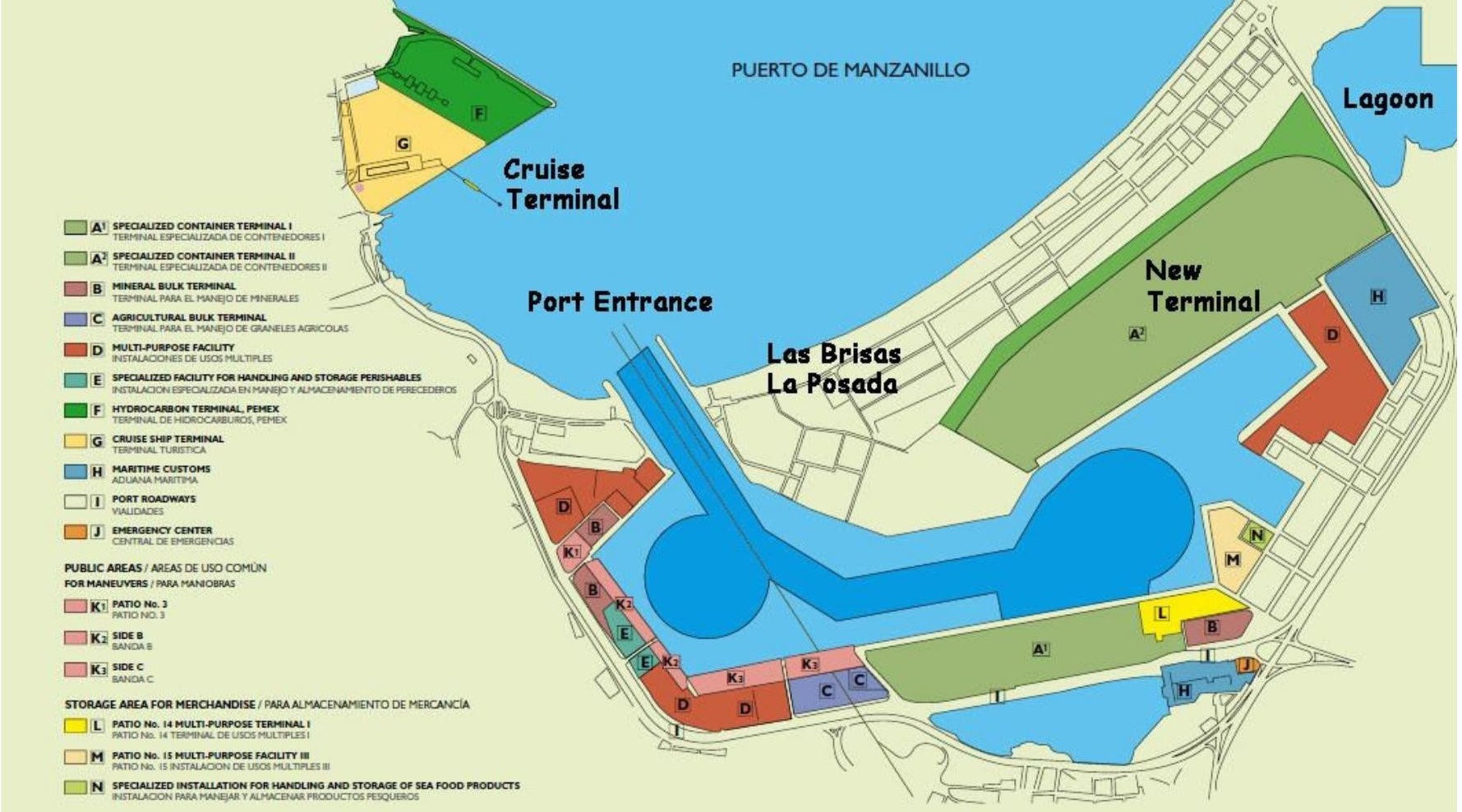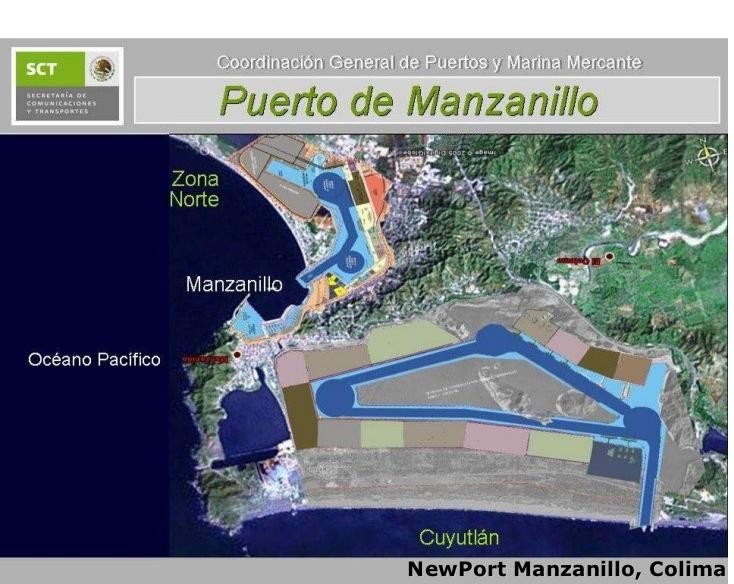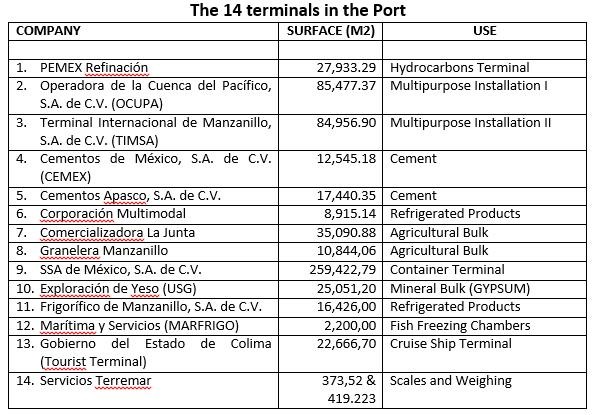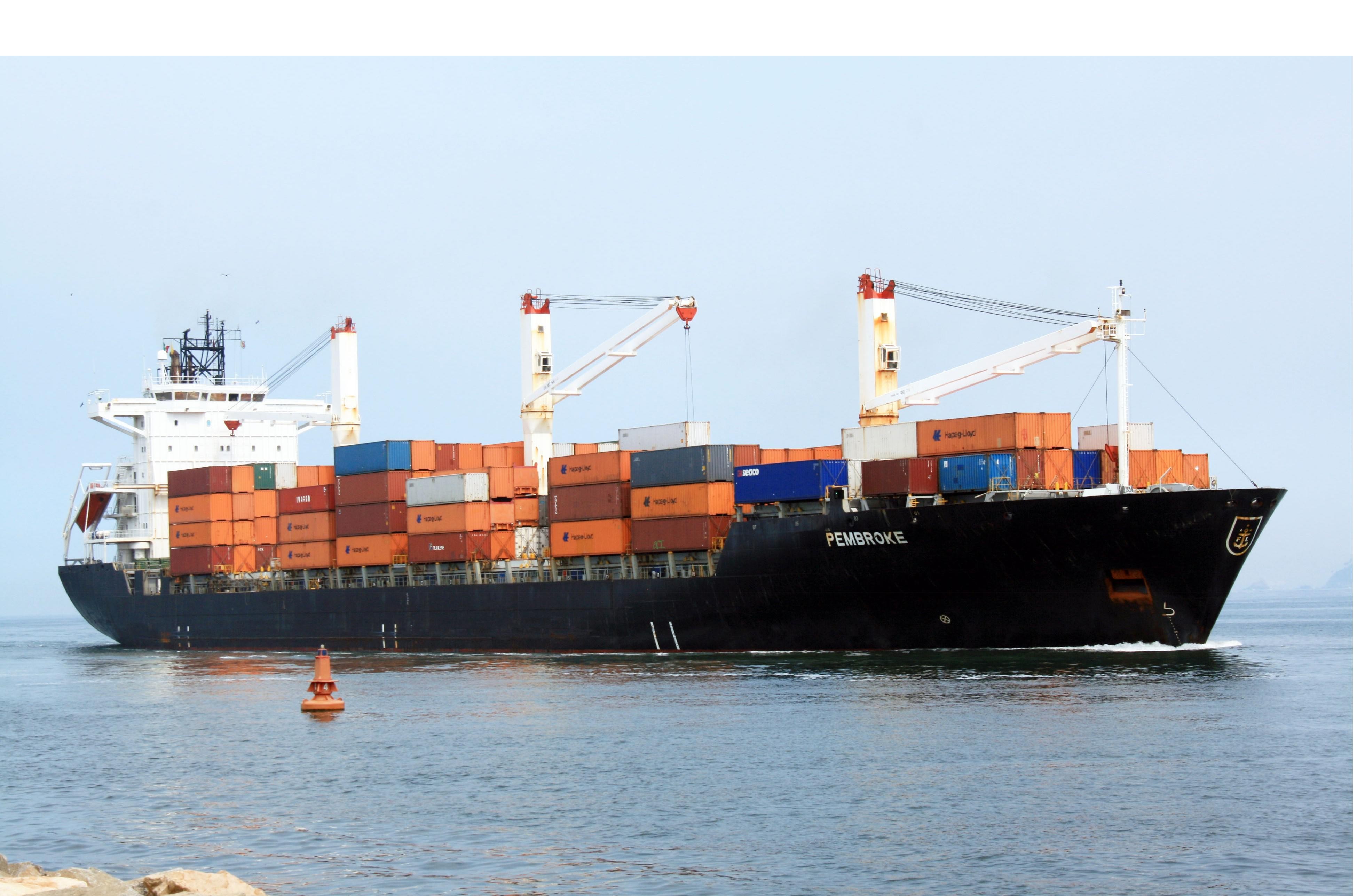By Terry Sovil from the March 2018 Edition
1971 was a turning point for the Port of Manzanillo. A new administration was introduced, smoothing relationships between workers and management/owners. The National Commission for Port Coordination was put in charge of worker assignments, assuring work was completed on schedule, obtaining equipment and increasing handling speed. It has operated for over 100 years, 24 hours a day, without a labor suspension. Items such as consumer goods, agricultural products and exports to the USA, Canada, Guatemala, Columbia, Chile, Japan, China, India, and Malaysia are handled. Exports are to 145 destinations around the world!
The port is overseen by the Integral Port Administration (API) headed by Juan Carlos Córdoba Estrada who is the Planning Manager. The huge expansion has been promoted by the Ministry of Communications and Transports (SCT) since 2013. Primary is the development of Cuyutlán Lagoon area. They want to maintain their spot as #1 commercial port nationally.
The port closed 2016 with 2.5 million TEUs (twenty foot equivalent units, containers are either 20 or 40 feet / 6 or 12.2 meters long) and 25 million tons of cargo that was imported or exported.
This makes the port #1 nationwide. But mixed with the good is the lack of space to grow. So, they are working on expanding the facility to complement their “Port without Papers”,quick handling of incoming and departing vessels and goods. The SCT granted 1,461 hectares (14,610,000 sq meters / 5.65 sq miles) of terminal 2 space in the Cuyutlán lagoon. Environmental studies are still being done and the overall cost will run up to 6 billion pesos. This will double incoming and out-going traffic.
Port without Papers is a new computerized process to speed billing, payments and permits with any mobile device 24 hours a day and 7 days a week.
“Quality Label” program coordinates with the port community to manage perishables in less than 36 hours, docking in less than 2 hours, departures in less than 1.5 hours, visit of authorities in less than an hour and visits of authorities for departures in less than 30 minutes. The Port of Manzanillo scored well in Contained Cargo movement and is #1 nation-wide (Mexico), #5 in Latin America and #64 worldwide.
Manzanillo is a clean port, recognized in 2016 by the API as the only port in Mexico where all 23 terminals participate under the Certificate of Clean Industry. The port works under the United Nations Global Compacts, has national and international certifications (ISO 9001 Quality Management) and ISO 14001 (Environmental Management).




The current port area consists of 437 hectares (1.7 sq miles / 4.37 sq km) which includes water areas, docks and storage. Currently it has 19 berths (14 commercial, 3 for hydrocarbons and 2 for cruise ships). The port has the following navigational areas:
1. Port Access Channel or the entry to the port. 600 meters / 1968 feet and a depth of 16 meters / 52 feet.
2. Northern Turning Basin allowing for docking positions up to 300 meters / 985 feet in length and 32 meters / 105 feet wide, with a depth of 16 meters / 52 feet.
3. Southern Turning Basin allowing for ships up to 300 meters / 985 feet in length and 28 meters / 92 feet wide, with a depth of up to 16 meters / 52 feet.
The Navigation Channel, with a depth of 16 meters / 52 feet, allows it to handle the new Panamax ships that carry 12-14,000 TEU’s. This means 30,000,000 tons of cargo annually. Panamax ships are large, with a length of 950 feet / 289.6 m, beam (width) of 106 feet / 32.31m and draft (how deep the hull is in the water) of 39.5 feet / 12.04 m. With a draft that large, the depth of the port and entrance channel is important! The new port addition in the lagoon will make the port about four times larger, increase capacity and help the maritime commerce in the Pacific basin.
The port currently works with 23 shipping lines including Maersk, Hapag-Lloyd and NYK. Working with 17 states in Mexico, the port has an influence on 65% of the Gross Domestic Product (GDP) and 55% of the country’s population. There are freezers in the fishing terminal with storage of up to 3,500 tons of products. The Specialized Terminal for Containers (TEC) has a capacity of up to three ships at a time with up to 120 boxes per ship per hour. There are three grain silos with 7,000 tons each and a refrigerated warehouse for perishables with capacity of up to 3,000 tons.
Port of Manzanillo, a worldclass port.
Download the full edition or view it online
—
Terry is a founding partner and scuba instructor for Aquatic Sports and Adventures (Deportes y Aventuras Acuáticas) in Manzanillo. A PADI (Professional Association of Dive Instructors) Master Instructor in his 36th year as a PADI Professional. He also holds 15 Specialty Instructor Course ratings. Terry held a US Coast Guard 50-Ton Masters (Captain’s) License. In his past corporate life, he worked in computers from 1973 to 2005 from a computer operator to a project manager for companies including GE Capital Fleet Services and Target. From 2005 to 2008, he developed and oversaw delivery of training to Target’s Loss Prevention (Asset Protection) employees on the West Coast, USA. He led a network of 80+ instructors, evaluated training, performed needs assessments and gathered feedback on the delivery of training, conducted training in Crisis Leadership and Non-Violent Crisis Intervention to Target executives. Independently, he has taught hundreds of hours of skills-based training in American Red Cross CPR, First Aid, SCUBA and sailing and managed a staff of Project Managers at LogicBay in the production of multi-media training and web sites in a fast-paced environment of artists, instructional designers, writers and developers, creating a variety of interactive training and support products for Fortune 1000 companies.



